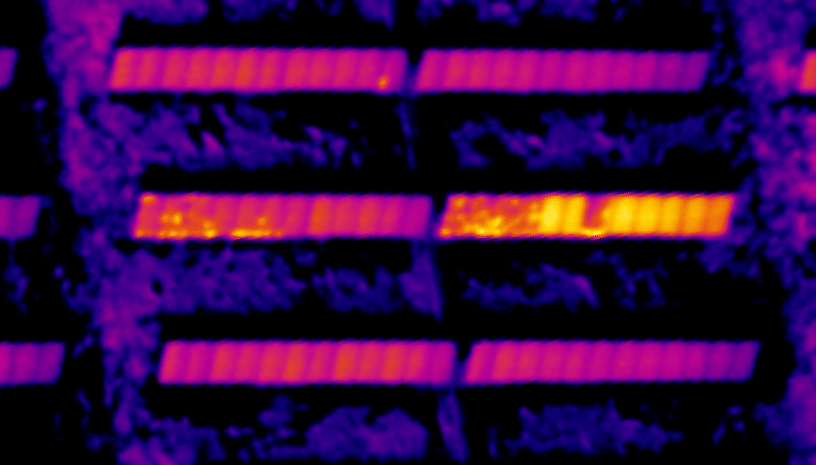From pv magazine USA
Better-performing solar cells are a key pathway to the acceleration of the active clean energy revolution. Most solar panels today are silicon-based and have a single junction. The upper theoretical limit of energy absorption efficiency for silicon solar cells, called the Shockley-Queisser limit, is about 33.7%.
Currently, Fraunhofer holds the record for commercial silicon single-junction solar cells at about 26%, so there is much room for improvement to hit the limit. But researchers at Arizona State University and the University of Oklahoma may have discovered a way to burst through the theoretical limit by taking advantage of excess heat.
As much as 50% of the energy absorbed by a solar cell is lost as heat. This excess energy comes as a result of the charged particles in the photovoltaic process taking in more energy than is needed to excite an electron and send it on its way as electricity. The teams are developing pathways to build what are called hot carrier solar cells (HCSC) to combat these thermal energy losses and improve efficiency.
HCSC was first conceived decades ago by R.T. Ross and A.J. Nozik. The two researchers theorized that particles carrying excess heat, or hot carriers, could be isolated and stored in a lattice structure that captures the energy. Experiments proved this was possible, but a functional HCSC cell has not yet been built.
New research in the Journal of Photonics for Energy outlines the many conditions that must be met to bring HCSC from theory to practice. The practice involves creating “satellite valleys” in the band structure of semiconductors, where hot carriers can temporarily be stored without energy loss. The satellite valley changes the kinetic energy of the excess heat particles into potential energy, changing the particle from a loss to one that is stored.
The researchers were able to successfully demonstrate storage of heat through the satellite valley effect by using a indium-gallium-arsenide and aluminum (InGaAs/InAlAs) structure.
The researchers noted that the concept is not a complete solution, and efficiently gathering the stored potential energy as electricity requires further testing. But the demonstration of storing this excess energy opens pathways for a technology that might finally overtake the Shockley-Quiesser limit.
Elsewhere, new technologies such as N-TOPCon and heterojunction (HJT) cells are working toward pushing the needle forward for PV efficiency.
This content is protected by copyright and may not be reused. If you want to cooperate with us and would like to reuse some of our content, please contact: editors@pv-magazine.com.




3 comments
By submitting this form you agree to pv magazine using your data for the purposes of publishing your comment.
Your personal data will only be disclosed or otherwise transmitted to third parties for the purposes of spam filtering or if this is necessary for technical maintenance of the website. Any other transfer to third parties will not take place unless this is justified on the basis of applicable data protection regulations or if pv magazine is legally obliged to do so.
You may revoke this consent at any time with effect for the future, in which case your personal data will be deleted immediately. Otherwise, your data will be deleted if pv magazine has processed your request or the purpose of data storage is fulfilled.
Further information on data privacy can be found in our Data Protection Policy.